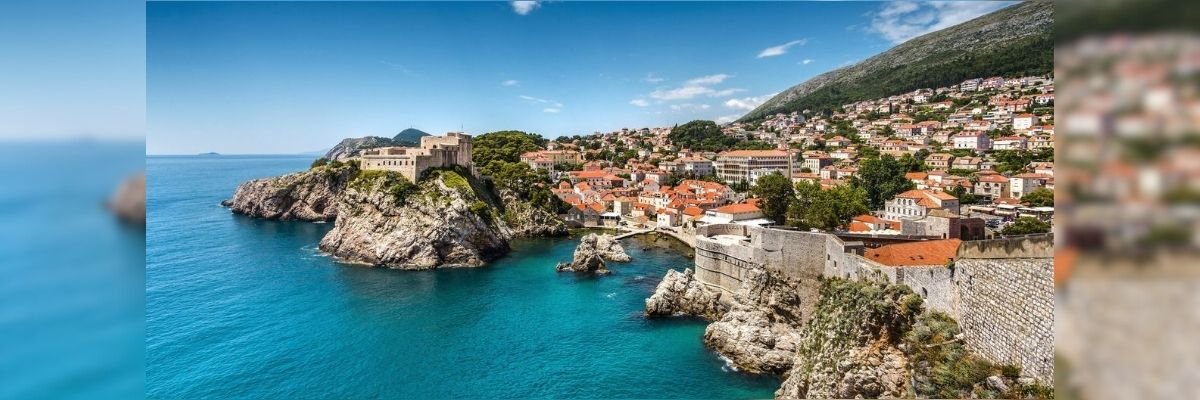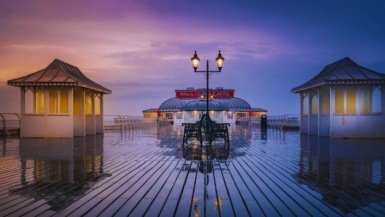Croatia, situated at the crossroads of Central and Southeast Europe, is a country brimming with natural beauty, rich history, and vibrant culture. From ancient cities to stunning coastlines, Croatia offers a diverse range of attractions for travelers. Let’s explore some of the top destinations to visit in this enchanting country.
1. Zagreb – The Capital City

Zagreb, Croatia’s capital and largest city, is a dynamic metropolis blending historic charm with modern amenities. Its lively atmosphere, vibrant street cafes, and cultural landmarks make it a must-visit destination.
Top Attractions:
- Ban Jelačić Square
- Zagreb Cathedral
- Tkalciceva Street
- Dolac Market
2. Dubrovnik – The Pearl of the Adriatic

Dubrovnik, often referred to as the “Pearl of the Adriatic,” is a picturesque coastal city renowned for its well-preserved medieval walls and stunning architecture. Its old town, a UNESCO World Heritage Site, is a treasure trove of historical and cultural attractions.
Must-Visit Sites:
- Dubrovnik City Walls
- Stradun Promenade
- Rector’s Palace
- Lokrum Island
3. Split – Ancient City with Modern Charm

Split, Croatia’s second-largest city, boasts a fascinating blend of ancient Roman heritage and contemporary allure. Its star attraction, Diocletian’s Palace, is a UNESCO World Heritage Site and a testament to the city’s rich history.
Highlights:
- Diocletian’s Palace
- Marjan Hill
- Cathedral of Saint Domnius
- Split Old Town
4. Plitvice Lakes National Park – Natural Wonder

Plitvice Lakes National Park is a mesmerizing natural paradise renowned for its cascading waterfalls, crystal-clear lakes, and lush greenery. Exploring its network of trails and wooden boardwalks offers a glimpse into Croatia’s pristine wilderness.
Exploring the Park:
- Upper and Lower Lakes
- Veliki Slap (Great Waterfall)
- Boat Rides
- Wildlife Watching
5. Hvar – Island Paradise

Hvar, one of Croatia’s most popular islands, is synonymous with luxury, beauty, and vibrant nightlife. Its charming towns, idyllic beaches, and lavender fields make it an ideal destination for relaxation and exploration.
Things to Do:
- Hvar Town
- Pakleni Islands
- Hvar Fortress
- Lavender Fields
6. Rovinj – Charming Coastal Town

Rovinj, a picturesque coastal town located on the Istrian Peninsula, captivates visitors with its colorful facades, cobbled streets, and scenic harbor. Its rich history, cultural heritage, and culinary delights make it a delightful destination to explore.
Attractions:
- Old Town
- St. Euphemia’s Basilica
- Rovinj Aquarium
- Golden Cape Park
7. Zadar – Fusion of Ancient and Modern

Zadar, a historic city on Croatia’s Dalmatian Coast, offers a unique blend of ancient monuments and contemporary attractions. From Roman ruins to innovative modern art installations, Zadar promises a memorable travel experience.
Notable Places:
- Sea Organ
- Greeting to the Sun
- Zadar Cathedral
- Forum Square
8. Pula – Rich Historical Heritage

Pula, situated at the southern tip of the Istrian Peninsula, boasts a wealth of Roman ruins, including its iconic amphitheater. Beyond its ancient landmarks, Pula offers pristine beaches, scenic vistas, and a laid-back Mediterranean atmosphere.
Points of Interest:
- Pula Arena
- Temple of Augustus
- Kamenjak National Park
- Brijuni Islands
9. Korčula – Quaint Island Town

Korčula, known as the birthplace of Marco Polo, is a charming island town characterized by its medieval walls, narrow streets, and vineyard-covered hillsides. Its rich history, cultural heritage, and stunning landscapes make it a hidden gem worth exploring.
Sightseeing:
- Korčula Old Town
- Marco Polo House
- St. Mark’s Cathedral
- Korčula Beaches
10. Trogir – UNESCO World Heritage Site

Trogir, a historic town nestled on a small island between the mainland and the island of Čiovo, is a UNESCO World Heritage Site renowned for its well-preserved medieval architecture. Its labyrinthine streets, ancient palaces, and picturesque waterfront make it a captivating destination.
Key Sights:
- Trogir Cathedral
- Kamerlengo Fortress
- St. Lawrence’s Church
- Trogir Old Town
11. Šibenik – Historic Gem

Šibenik, a charming coastal city located along the Adriatic coast, boasts a rich history, stunning architecture, and scenic waterfront promenade. Its crown jewel, the Cathedral of St. James, is a UNESCO World Heritage Site and a masterpiece of Renaissance architecture.
Exploring the City:
- St. James’s Cathedral
- Šibenik Old Town
- St. Michael’s Fortress
- Krka River Promenade
12. Krka National Park – Serene Beauty

Krka National Park, named after the Krka River, is a paradise for nature lovers, featuring cascading waterfalls, tranquil lakes, and lush forests. Visitors can explore its network of walking trails, swim beneath waterfalls, and admire the park’s diverse flora and fauna.
Activities:
- Skradinski Buk Waterfalls
- Visovac Island
- Roski Slap Waterfalls
- Krka Monastery
13. Vis – Off-the-Beaten-Path Destination

Vis, one of Croatia’s lesser-known islands, offers a tranquil retreat away from the crowds. Its rugged coastline, secluded coves, and charming villages exude an authentic Mediterranean charm, making it a hidden gem for adventurous travelers.
Hidden Gems:
- Vis Town
- Stiniva Beach
- Blue Cave
- Military Tourist Complex
Conclusion
Croatia’s diverse landscapes, rich history, and vibrant culture make it a captivating destination for travelers seeking adventure, relaxation, and discovery. Whether exploring ancient cities, pristine national parks, or idyllic islands, Croatia promises unforgettable experiences at every turn.
FAQs
Is Croatia safe for tourists?
Yes, Croatia is considered a safe destination for tourists. However, it’s always advisable to exercise caution and be aware of your surroundings, especially in crowded areas.
When is the best time to visit Croatia?
The best time to visit Croatia is during the spring (April to June) and fall (September to October) when the weather is pleasant, and the crowds are smaller.
Do I need a visa to visit Croatia?
It depends on your nationality. EU citizens can enter Croatia with a valid ID card, while citizens of certain countries may need a visa. Check the visa requirements before your trip.
What currency is used in Croatia?
The official currency of Croatia is the Croatian Kuna (HRK). Euros are not widely accepted, so it’s advisable to exchange currency upon arrival.
What are some traditional Croatian dishes to try?
Some traditional Croatian dishes to try include cevapi (grilled minced meat), burek (savory pastry), seafood risotto, and peka (baked meat and vegetables).





Leave a reply